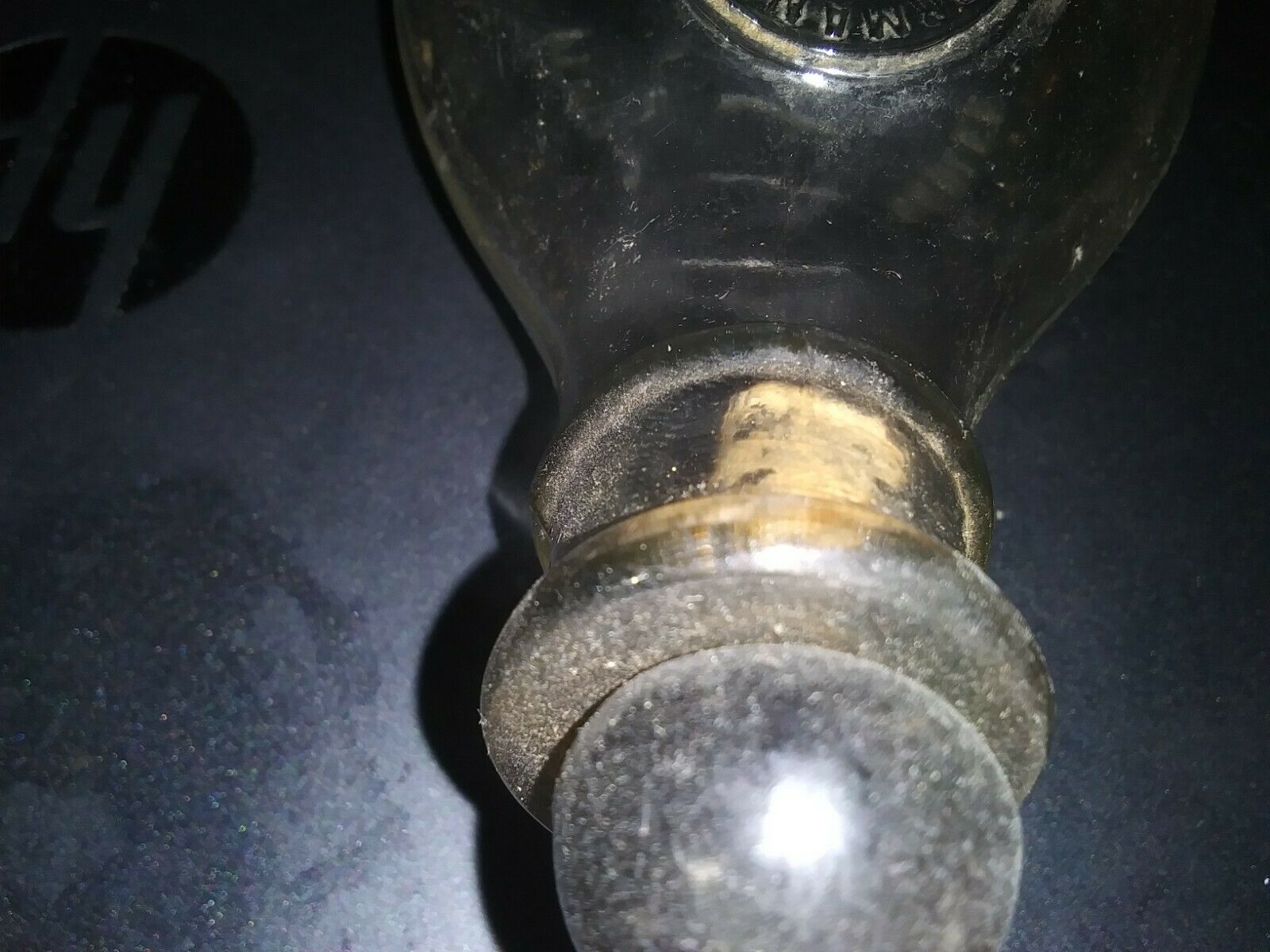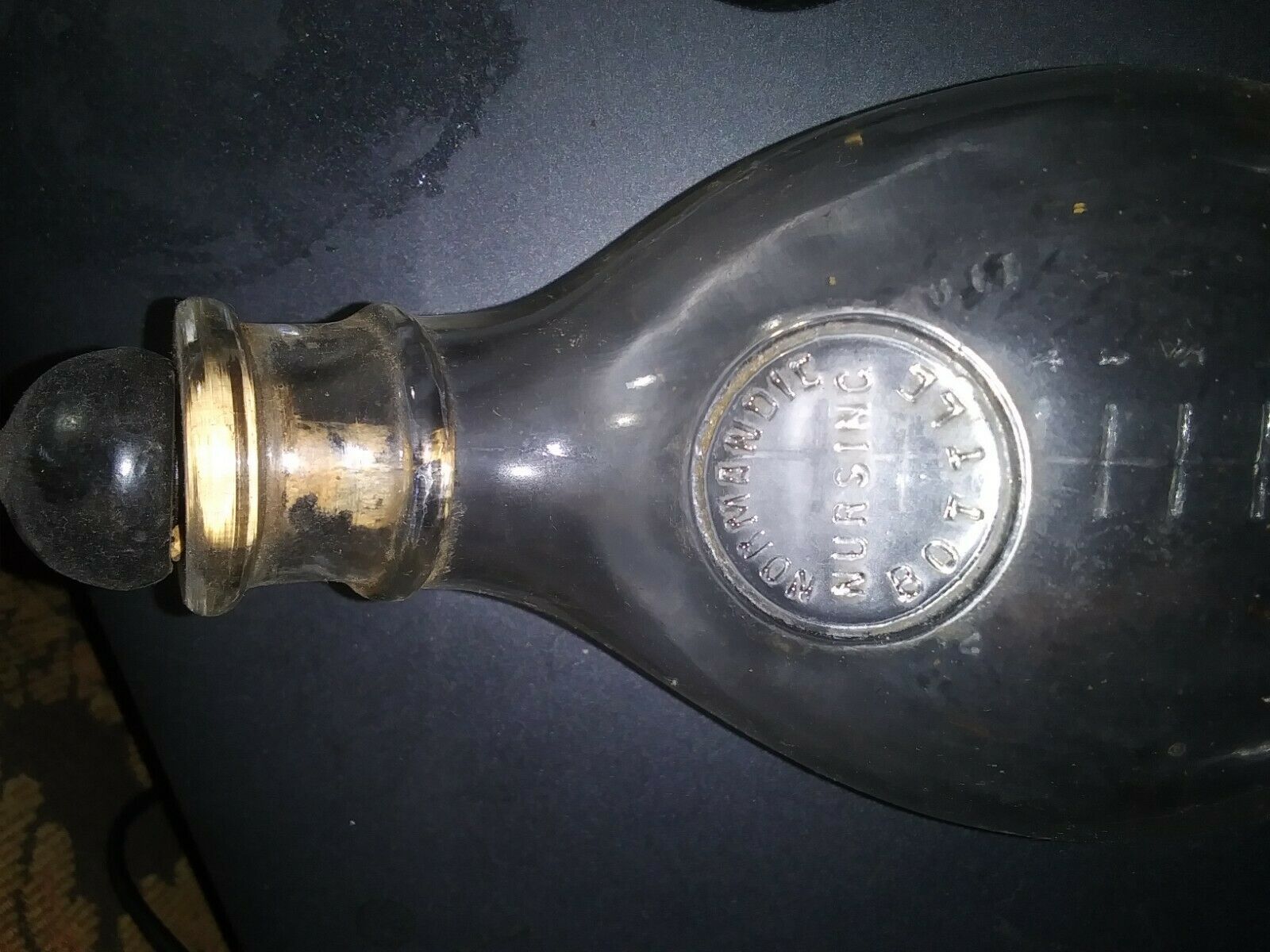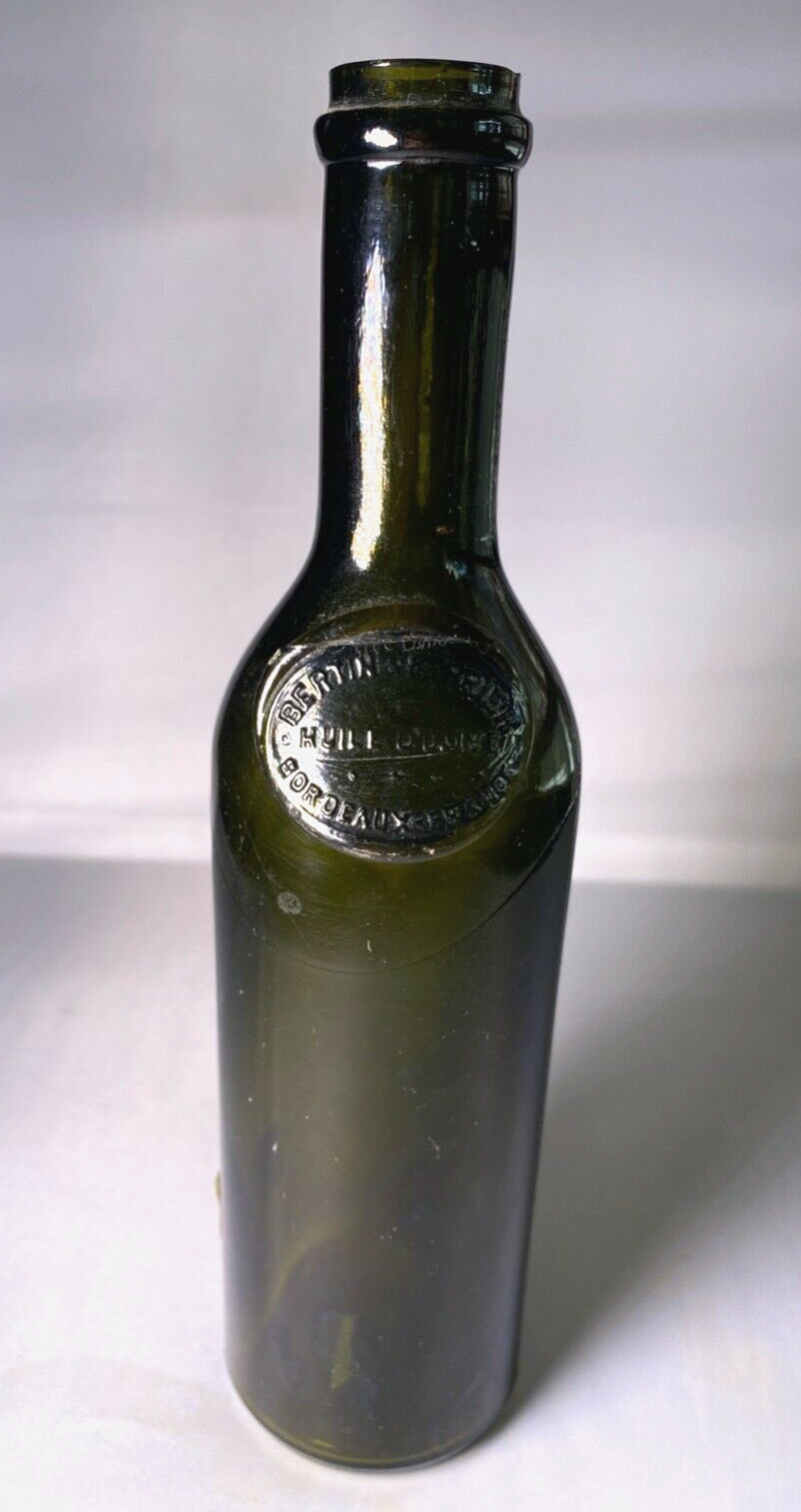-40%
Antique "Normandie Nursing Bottle" Baby Bottle-Tear Drop Shaped w/nipple
$ 21.12
- Description
- Size Guide
Description
Nursing bottle from the past century...Probably 1920's vintage... possibly older...This one has the original nipple ... could be bakelite or hard rubber not certain... the corking around the nipple has decayed or been damaged after removal at some time. Nipple seems firmly in place so there's cork still left...I have never removed it.During the mid-19th century, great strides were made in the development of the feeding bottle and the nipple. Glass bottles were used, and the evolution of the modern bottle began. The first feeding bottles, created in 1851 in France, were elaborate. They contained a cork nipple and ivory pins at air inlets to regulate flow. However, during this time in France, it was still more popular to spoon-feed the infant or have the child suckle directly from an animal's teat. In 1896, a simpler, open-ended, boat-shaped bottle was developed in England, became popular, and was sold well into the 1950s (
Wickes, 1953d
). Teats or nipples introduced in the 19th century were originally made from leather and were preferred over the use of devices made from cork. In 1845, the first Indian rubber nipple was introduced (
Osborn, 1979b
). Although the first rubber nipples had a repulsive odor and taste, they were refined and adapted by the beginning of the 20th century (
Wickes, 1953d
). With the invention of the modern feeding bottle and nipple, the availability of animal's milk, and the change in society's acceptance of wet nursing, artificial feeding became a popular choice. As a result, medicine began to focus on infant nutrition from an alternative milk source.
SHIPPED USPS

















